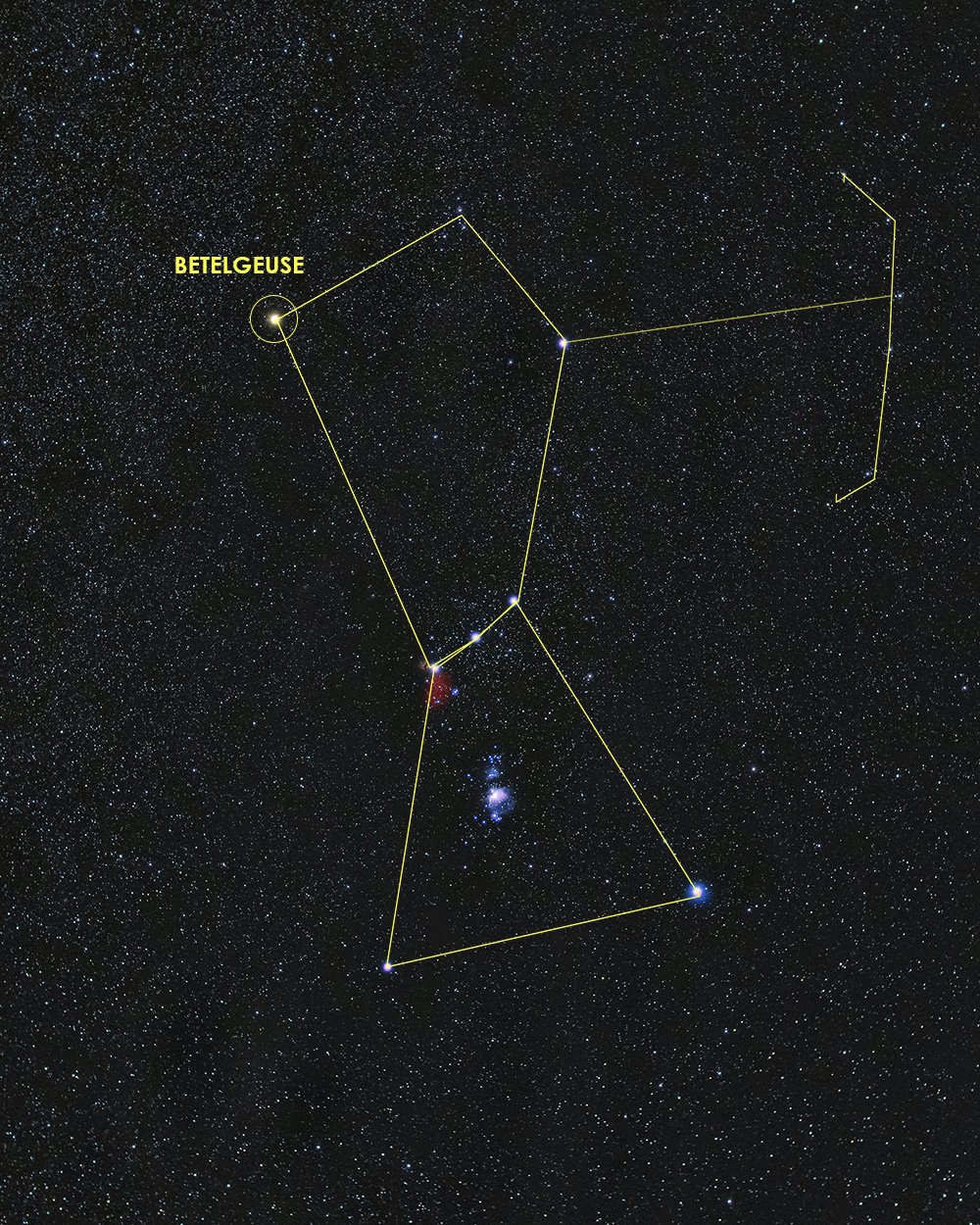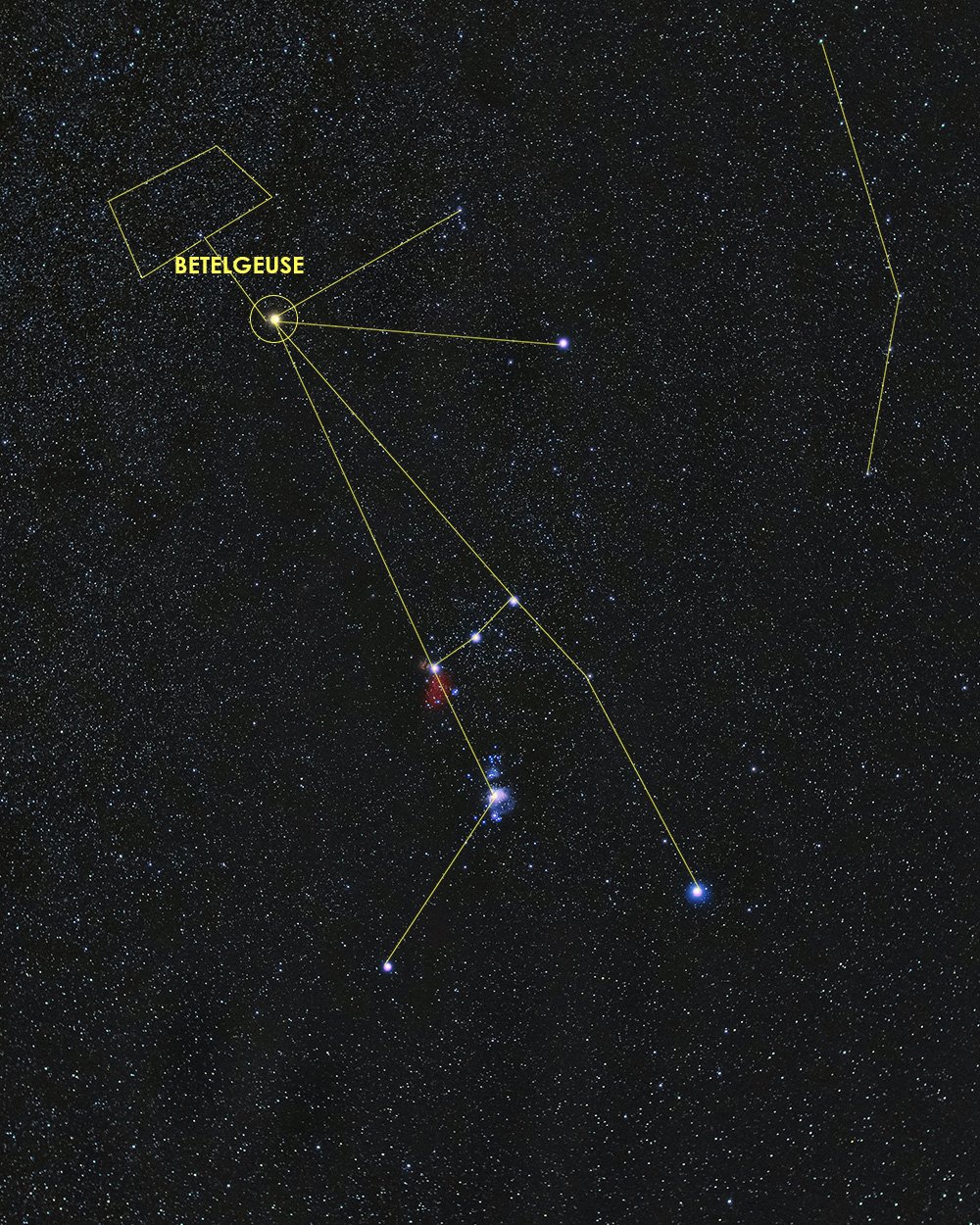Humans across the world live under one sky and see the same stars — and yet, each culture views the night sky differently. The beliefs, customs, and worldview of the culture are reflected in the patterns they identified, and the names they assigned each constellation.
What is a constellation?
A constellation is a group of stars that form a distinct pattern that has been given a name. At present, there are 88 “official” constellations that astronomers use to map out the sky, but naming constellations is a practice that dates back to early human history.
Historically, constellations serve a number of cultural functions:
As a calendar, especially for agricultural purposes, as the appearance of certain constellations indicate the season or time of year
As a way of navigation, especially for seafaring peoples
As a way of preserving and communicating stories about their culture
One of the brightest stars in the night sky, Betelgeuse forms a part of the modern constellation Orion, named after a Greek figure known for supernatural strength. But this star is seen in various ways by other cultures.
For instance, Navajo culture sees Átse Ats'oosí (First Slender One) where others see Orion. Similarly, this constellation, which represents a bow-and-arrow-wielding warrior in their culture, is a symbol of protection.
To the Japanese, Betelgeuse is called Heike Boshi, and forms a part of a constellation known as the Investigator. This constellation occupies the same area as Orion, but has a different pattern that, together with the star Rigel, represents the story of a legendary war between two families that was fought with honor. This story continues to be passed down the generations as a reminder of the importance of duty, sacrifice, bravery, and loyalty.
The same case is true for Sirius, the brightest star in the night sky. Most famously, Sirius forms a part of the constellation Canis Major, or Large Dog, but other cultures form very different patterns with this star.
For more in-depth comparisons, check out this interactive visualization of the night sky according to different cultures created by astronomer Nadieh Bremer.



